Dill (Anethum graveolens) is a fragrant, feathery herb loved by gardeners and cooks alike. Known for its delicate leaves and unique flavor, dill enhances soups, salads, seafood dishes, and of course, pickles. But dill isn’t just a culinary star—it also attracts pollinators, repels harmful pests, and adds ornamental value to your garden with its airy foliage and umbrella-like flowers.
The best part? Dill is relatively easy to grow, making it an excellent choice for both beginners and experienced gardeners. In this guide, you’ll learn everything about planting dill, caring for it, harvesting, and ensuring a thriving crop in your garden.
Why Grow Dill in Your Garden?
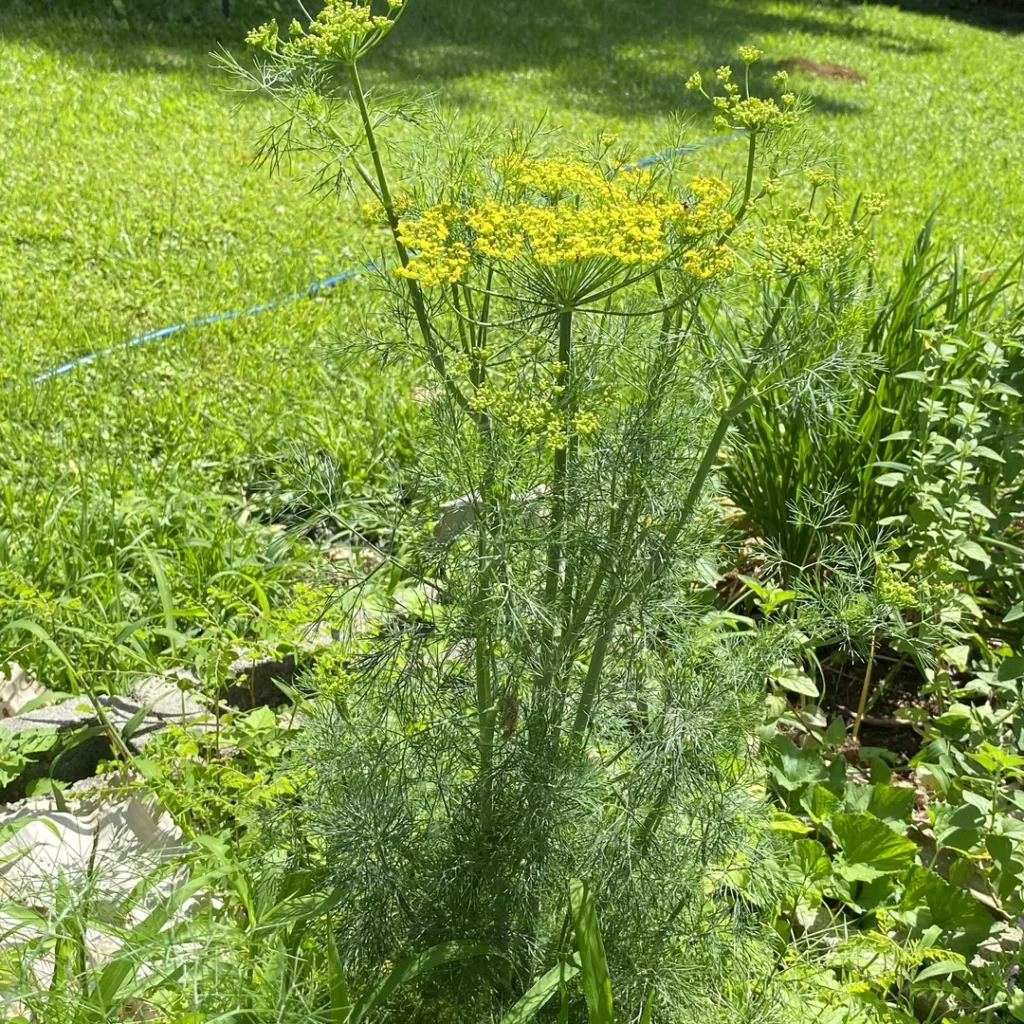
Before diving into the planting process, let’s highlight the reasons dill is worth growing:
- Culinary uses – Its leaves (dill weed) and seeds are both edible and widely used.
- Attracts beneficial insects – Flowers draw pollinators like bees and butterflies.
- Repels pests – Helps deter aphids, spider mites, and cabbage worms.
- Low maintenance – Requires minimal care once established.
- Fast-growing – Ready to harvest just a few weeks after planting.
Choosing the Right Dill Variety
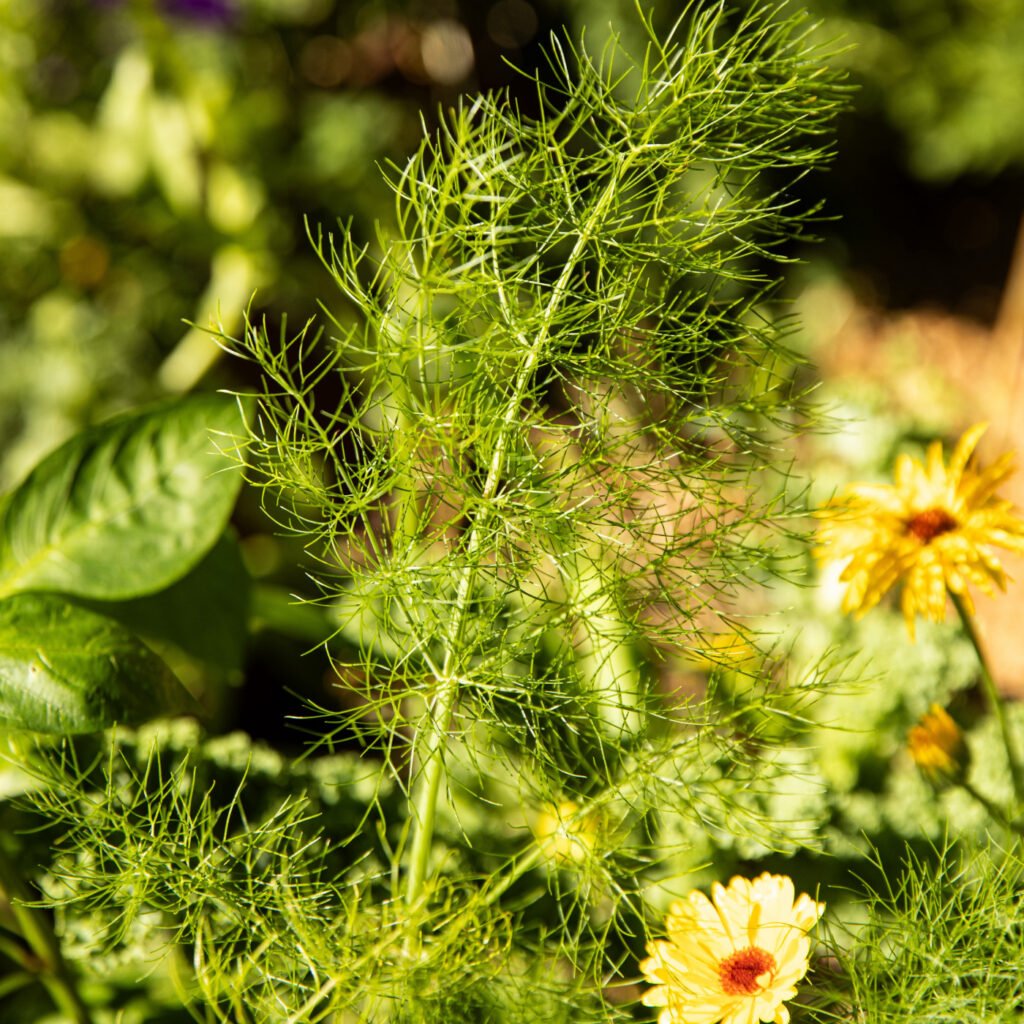
Several dill varieties are available, and choosing the right one depends on your gardening needs:
- Bouquet Dill – Early flowering, great for seeds and pickling.
- Fernleaf Dill – Compact variety, perfect for container gardening.
- Mammoth Dill – Grows tall (up to 4 feet), excellent for leaves and seeds.
- Dukat Dill – Sweet, aromatic leaves, slow to bolt, ideal for leaf harvest.
For beginners, Fernleaf and Dukat are excellent choices because they produce lots of flavorful foliage before bolting.
Best Growing Conditions for Dill
Dill thrives in the right conditions, so set your garden up for success:
- Sunlight: Dill prefers full sun—at least 6–8 hours of direct light daily.
- Soil: Light, well-draining soil enriched with compost. A pH between 5.5 and 6.5 is ideal.
- Temperature: Best grown in cooler weather, between 60–75°F (15–24°C). It struggles in extreme heat.
- Watering: Keep the soil consistently moist but not soggy.
Planting Dill
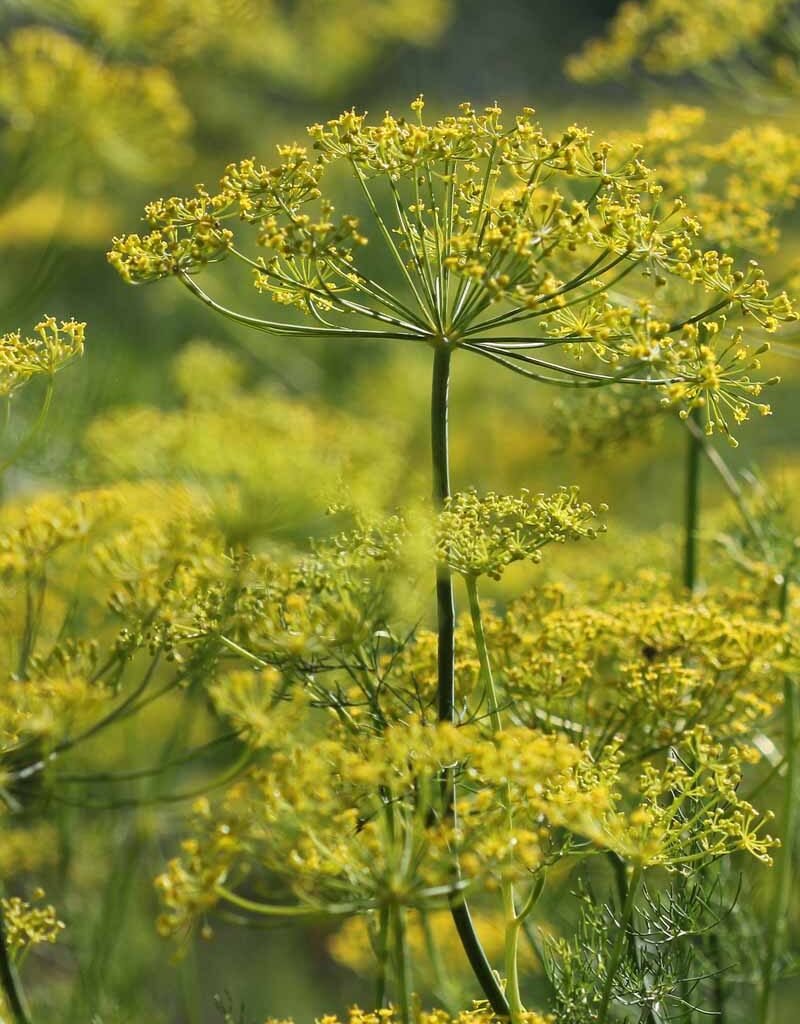
1. Starting from Seeds
Dill is best grown directly from seeds, as it has a delicate taproot and does not transplant well.
- Timing: Sow seeds in early spring after the last frost, or in late summer for a fall crop.
- Planting depth: Sow seeds about ¼ inch deep in soil.
- Spacing: Space seeds 12–18 inches apart to allow proper airflow.
- Germination: Seeds sprout in 7–14 days under optimal conditions.
2. Growing in Containers
If space is limited, dill grows well in pots:
- Choose a container at least 12 inches deep to accommodate its taproot.
- Use a lightweight potting mix with good drainage.
- Place the container in a sunny location.
Caring for Dill
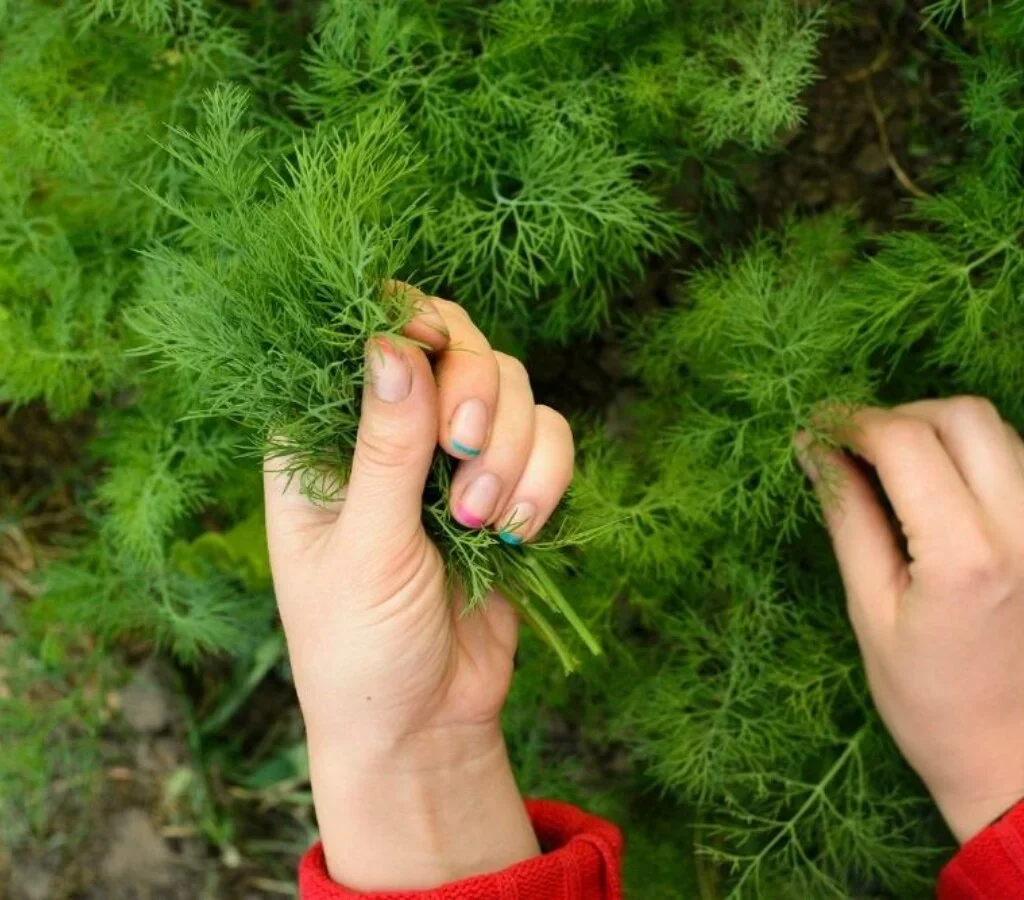
Once your dill seedlings are established, proper care ensures healthy, productive plants.
Watering
- Water regularly to keep soil moist, especially during dry spells.
- Avoid overwatering—soggy soil can cause root problems.
Fertilizing
- Dill doesn’t need heavy feeding.
- Mix compost into the soil before planting.
- Apply a diluted balanced fertilizer once or twice during the growing season if needed.
Mulching
- Add a light layer of mulch around plants to conserve moisture and suppress weeds.
Staking
- Taller dill varieties may require staking to prevent them from falling over in wind or rain.
Pruning
- Pinch off flower buds if you want prolonged leaf production. Once dill flowers, leaf quality declines.
Harvesting Dill
Harvesting Leaves (Dill Weed)
- Begin harvesting leaves once plants are 8 inches tall (about 6–8 weeks after planting).
- Cut outer leaves first, leaving the inner growth to continue producing.
- Regular harvesting encourages bushier growth.
Harvesting Seeds
- Allow plants to flower and develop seed heads if you want dill seeds.
- When seed heads turn brown and dry, cut them and place them upside down in a paper bag.
- Shake gently to collect seeds, then dry them completely before storing.
How to Keep Dill Thriving
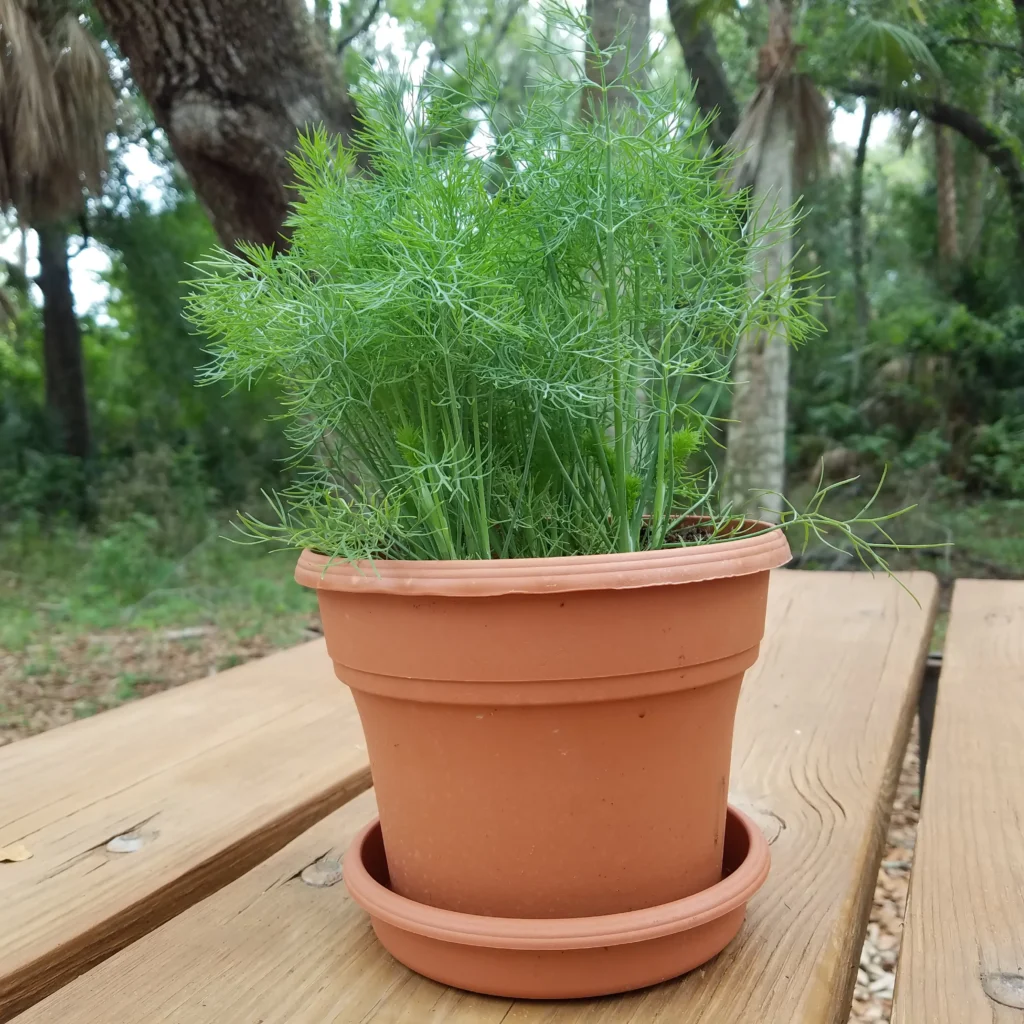
Dill has a short life cycle (about 70 days), but with a few tricks, you can enjoy it longer:
- Succession Planting – Sow seeds every 2–3 weeks for continuous harvest throughout the season.
- Partial Shade in Hot Weather – Provide light shade during summer to prevent bolting.
- Companion Planting – Grow dill near cabbage, cucumbers, onions, and lettuce. Avoid planting near carrots or tomatoes, as it can stunt their growth.
Common Pests and Diseases
Although dill is hardy, it can still face some challenges.
Pests
- Aphids – Cluster on leaves; spray with water or neem oil.
- Caterpillars (Swallowtail larvae) – They love dill, but they’re also beneficial butterflies in the making. Hand-pick if infestations are heavy.
- Spider Mites – Thrive in hot, dry conditions. Mist plants or use insecticidal soap.
Diseases
- Powdery Mildew – Appears as a white coating on leaves; avoid overcrowding and ensure good airflow.
- Root Rot – Caused by overwatering or poor drainage.
- Leaf Spot – Brown or yellow patches on leaves; remove infected foliage.
Culinary and Medicinal Uses of Dill
In the Kitchen
- Leaves: Use fresh in salads, soups, dips, and seafood dishes.
- Seeds: Perfect for pickling, spice mixes, and bread.
- Flowers: Can be used in pickling for flavor.
Health Benefits
- Rich in vitamins A and C.
- Contains antioxidants that support immunity.
- Traditionally used to ease digestion and bloating.
- May help reduce inflammation.
Troubleshooting Common Dill Problems
- Bolting too quickly – Plant slow-bolting varieties like Dukat, provide partial shade, and harvest frequently.
- Sparse growth – Ensure enough sunlight and avoid overcrowding.
- Yellowing leaves – Often a sign of overwatering, poor drainage, or nutrient deficiency.
- Flimsy stems – Tall dill varieties need staking or protection from strong winds.
Final Thoughts
Dill is one of the easiest and most rewarding herbs you can grow in your garden. With its feathery leaves, delicate yellow blooms, and unique flavor, dill brings both beauty and functionality to your space. By sowing directly from seed, watering consistently, and practicing succession planting, you’ll enjoy a continuous harvest of fresh dill leaves and seeds throughout the season.
Whether you’re using it in your kitchen, attracting pollinators to your garden, or enjoying its health benefits, dill is a true multipurpose plant. By following this guide, even a beginner gardener can confidently plant, care for, and keep dill thriving year after year.
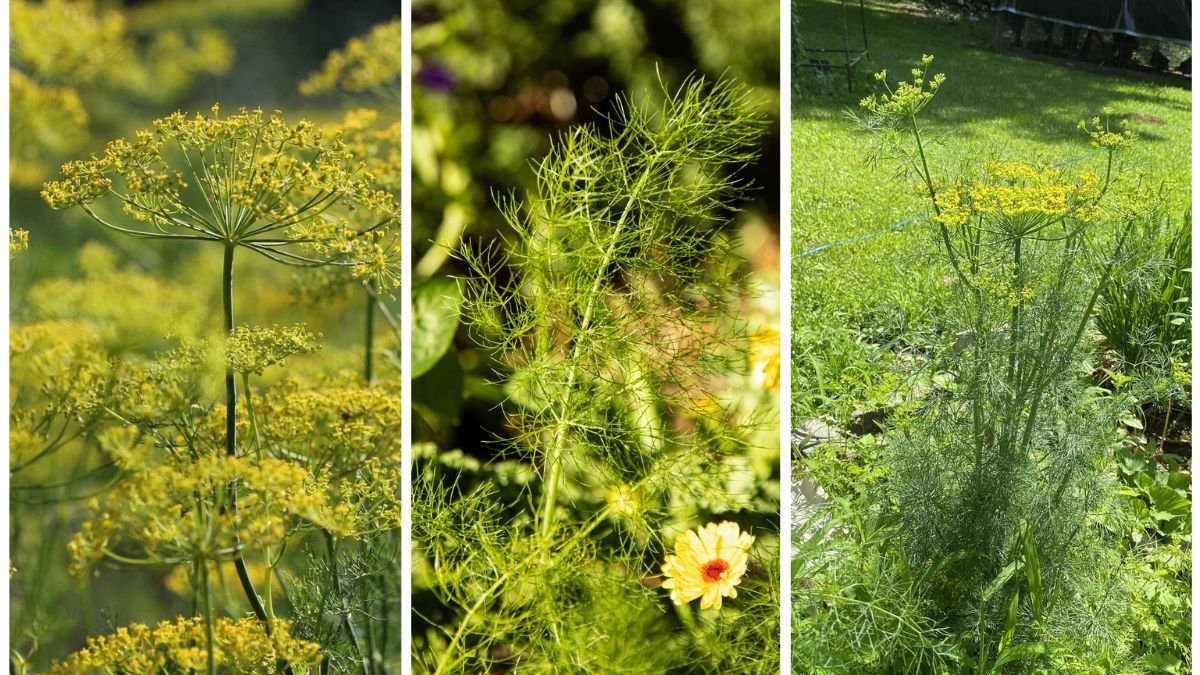




Leave A Comment